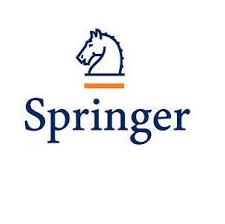Discussion
Abundances of all invertebrates, including those both with and without a terrestrial flying adult stage, were higher overall in agricultural than forested streams. This likely reflects higher autotrophic productivity associated with reduced shading and increased nutrient inputs in agricultural streams (Delong and Brusven 1998; Harding et al. 1999), particularly given there were no differences in the overall size of the two stream types (Carlson et al. 2016). Abundances of most of our focal species traits were similarly higher in the agricultural streams, and in riffle habitats. However, we also observed multiple interactions between land use, season and habitat, both in our analyses of all traits combined, and when analysing individual traits separately. These interactions reflect differences in the predominant life history strategies characterising the macroinvertebrate communities of forested and agricultural streams, and of riffle and pool habitats, and have implications for potential spatio-temporal variability in aquatic subsidy production and availability for terrestrial consumers. Most of the traits characterising aquatic insect assemblages from the agricultural streams are indicative of more limited dispersal by the adult stages, including small adult size, short adult life span and weak adult flying strength. These traits were associated especially with small-sized Diptera having short-lived adults, particularly Chironomidae, which dominated our agricultural assemblages. Individuals characterized by these traits will generally stay close to the stream edge following emergence, and their short adult life span will both limit the time available both for extensive dispersal, and for consumption by terrestrial consumers (Kovats et al. 1996; Malmqvist 2002; Petersen et al. 2004; Krosch et al. 2009). Greenwood and Booker (2016) similarly found that small body size was a characteristic trait of invertebrate assemblages from streams with more pasture upstream, though this was associated with strong rather than poorly dispersing taxa. In our study, only one trait indicative of greater dispersal, long female flight distances, was characteristic of the agricultural streams, associated with blood-feeding Diptera (Ceratopogonidae and Simuliidae) that have females which disperse farther in search of meals (Lassen et al. 2012; McCreadie and Adler 2012). The influence that this might have on connectivity between freshwater and terrestrial habitats is demonstrated by Carlson et al.’s (2016) finding that the proportion of blood feeding Ceratopogonidae was associated with greater dispersal distance by adult Diptera overall.








